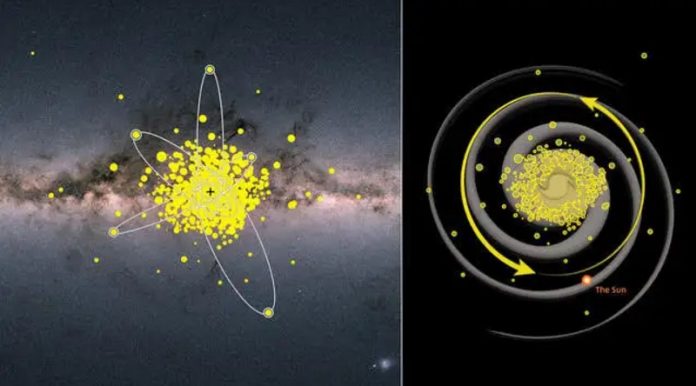
An international team of researchers has obtained the largest set of detailed observations yet of the oldest stars in the center of our Galaxy, the Milky Way.
The Pristine Inner Galaxy Survey (PIGS) team finds that this group of stars is slowly spinning around the center of the Milky Way, despite being thought to have formed in a chaotic fashion.
They also seem to spend most of their long lives near the Galactic center.
PIGS team member Dr. Anke Arentsen from the University of Cambridge presents the new work this week at the National Astronomy Meeting 2023 at the University of Cardiff.
Some of the stars that were born in the first billion years after the Big Bang are still around today, and they can be used to study what galaxies were like when they were just starting to form.
They can be recognized by their pristine chemical composition, mostly being made of hydrogen and helium, with a much lower abundance of heavier elements than younger stars like the Sun.
Astronomers typically search for these ancient stars away from the Milky Way disk plane, in the low-density halo around our Galaxy, where they are easier to find.
Galaxy formation models suggest that the very oldest stars are expected to be present in the dense inner parts of the Milky Way.
Finding them in this region is challenging as our line of sight to the center of the Galaxy is blocked by large amounts of interstellar dust, and ancient stars are extremely rare compared to the overwhelming majority of their younger peers.
In the PIGS project, Arentsen and her team employed a special imaging filter on the Canada-France-Hawaii Telescope (CFHT) to efficiently pre-select candidate stars.
They were confirmed with spectroscopic observations on the Anglo-Australian Telescope (AAT), resulting in the largest set yet of detailed observations for pristine inner Galaxy stars.
The PIGS observations were then combined with data from the Gaia space mission to study how these ancient stars move through the Milky Way.
It turns out that the older the stars are, the more chaotic their motions, but even the very oldest stars found still show some average rotation around the center of the Galaxy.
They also show that many of these stars spend almost all of their lives in the inner Galaxy, inside a sphere that reaches only halfway between the galactic center and the Sun.
Arentsen comments, “It is exciting to think that we are seeing stars that formed in the earliest phases of the Milky Way, previously largely out of reach.
These stars likely formed less than a billion years after the Big Bang, so are relics from the early Universe.
The available data for these ancient objects is growing rapidly. I’m excited to see what we will learn about these first stars to populate our Galaxy in the next few years!”
Follow us on Twitter for more articles about this topic.



